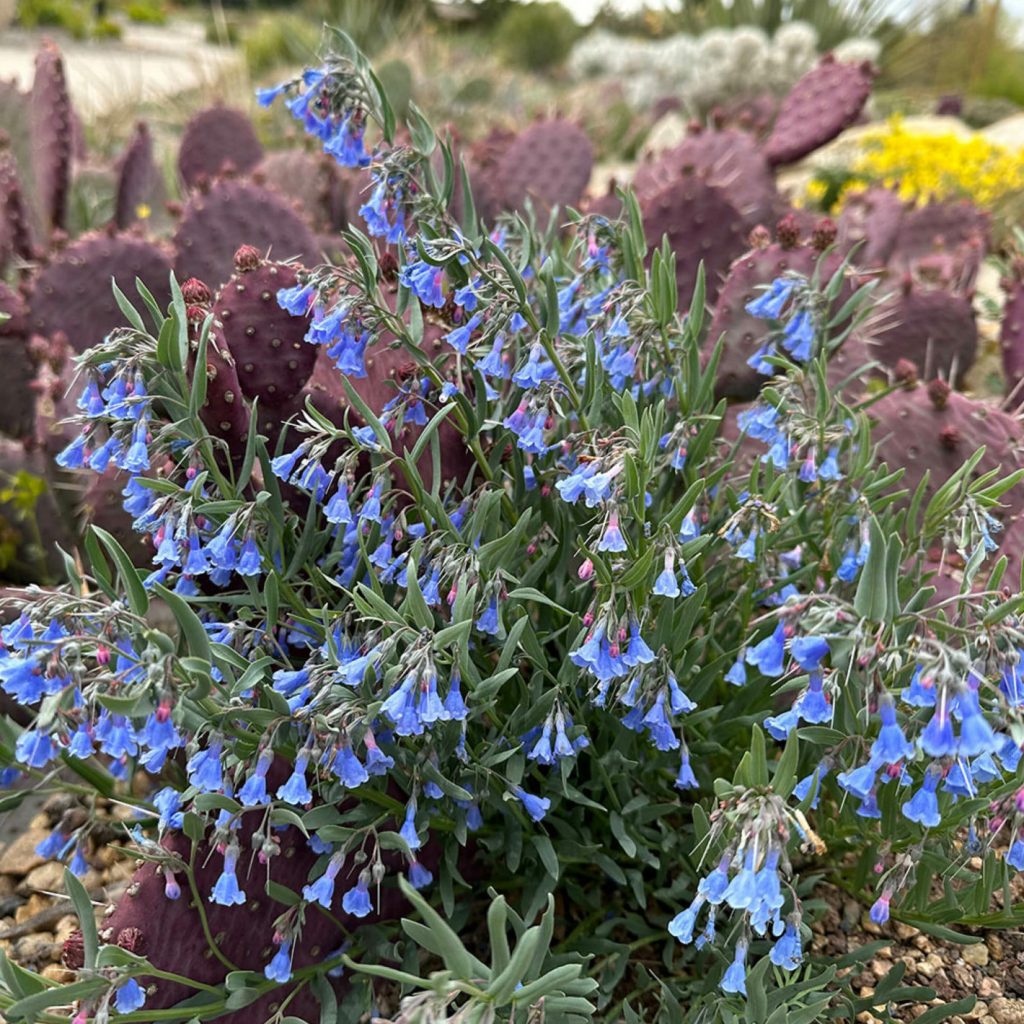Aside from the wide-open sky, true blue is a rare color in continental landscapes. The few places it does occur typically signal lakes and rivers, crucial sources of water (and associated foods) in an environment where the resource is limited. Otherwise, the color appears only sparingly in stones and flowers.
While bees don’t perceive red, they actively seek some ultraviolet wavelengths as well as yellow, purple, and blue when out foraging. So if bees see and seek blue flowers, why is the color so unusual? Blue in plants and animals is a difficult pigment to produce. Many plants that have a blue flower achieve the color by producing a pigment called an anthocyanin, which is purple to red and pH sensitive; like a hydrangea flower, its apparent color is changed by modifying the pH of the bloom in addition to the concentration of the pigment. While it can be done, it’s not nearly as easy to achieve a true blue this way as it is to create purple and yellow, which have one or more dedicated pigments. In animals, especially birds, the color blue is often achieved not by a pigment (once again: hard to produce) but instead by a structural change that scatters light in a manner that makes the structure (like a feather) appear blue to our eyes.
For this reason, true blue remains a coveted color in our gardens, springing to mind mental images of satin-textured, Himalayan blue poppy (Meconopsis spp. and ×., Zones 5–9) flowers, often regarded as some of the most charismatic of blue flowers. Sadly for us Rocky Mountain gardeners, such poppies pretty much despise our alkaline soils and drier climate, though talented staff at Yampa River Botanic Park in Steamboat Springs did grow a gorgeous crop of them last year (see photo below). They are worth a visit if you haven’t been. For those a bit farther from Steamboat, we do have a smattering of true blue native flowers that make great garden plants. Read on to learn about native wildflowers that bloom in true blue.
Prairie Bluebells
(Mertensia lanceolata, Zones 3–6)
A highly variable species present over both the American Rockies and the Great Plains, prairie bluebells defies its delicate appearance with a tolerance for drought and a contentedness at both low and high elevations. The plant is slow to establish but long-lived, forming gray-green tufts of tapered leaves over several years. In mid-spring and over the attractive foliage, the species raises delicate-looking sprays of dangling, bell-shaped true-blue flowers that end up making coveted pit stops for hungry bumblebees. I have particularly enjoyed how this plant tolerates a range of soil textures and how it requires very little watering after establishment to thrive. Prairie bluebells grows well in partial to full sun and is exceedingly cold hardy, growing naturally into Zone 3. This plant can be challenging to find in the horticulture trade, and you may need to buy starts or seeds online if you cannot locate it in your area.
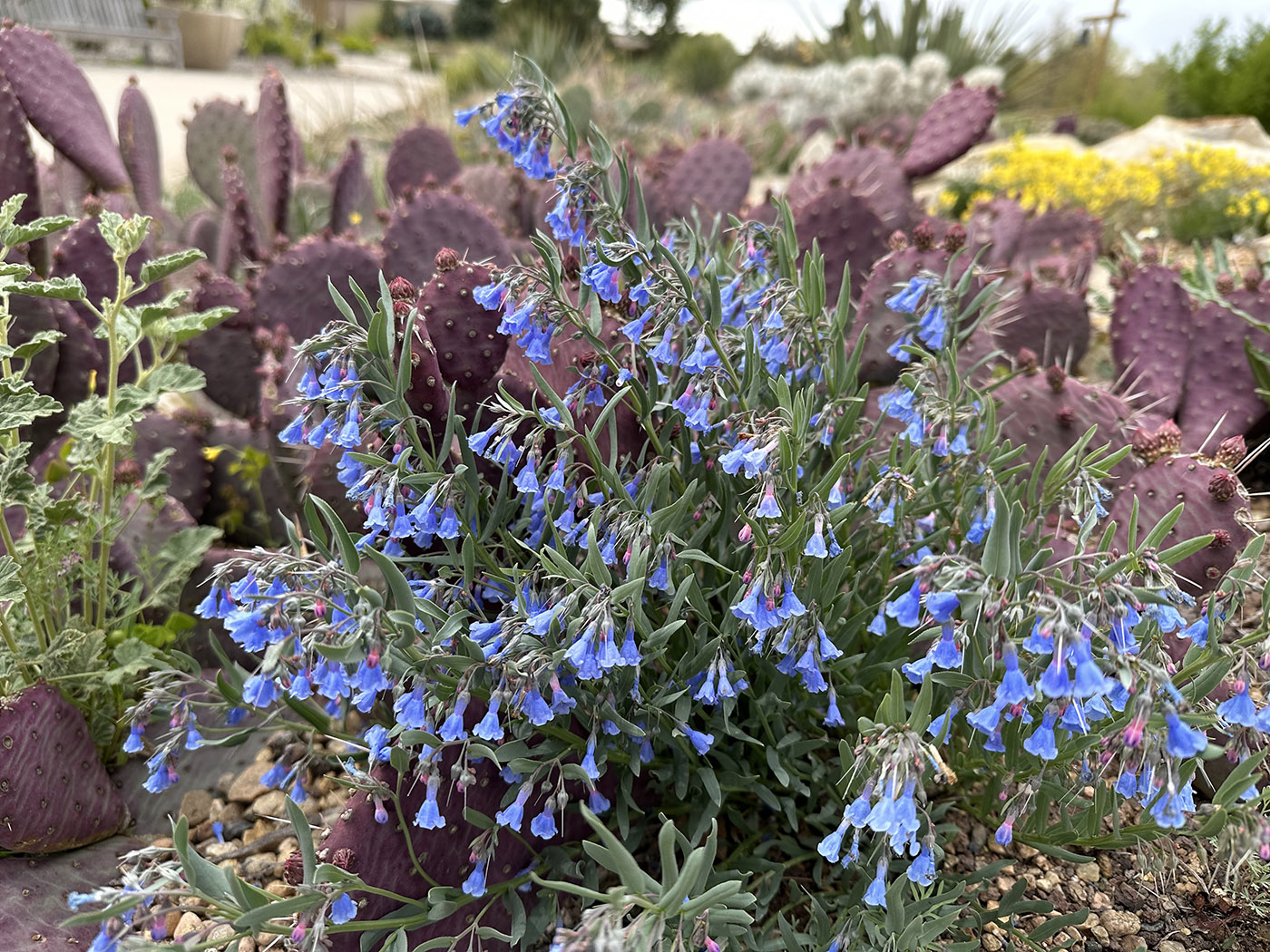
Grand Mesa Penstemon
(Penstemon mensarum, Zones 3–9)
Blooming in late spring, shortly after prairie bluebells, Grand Mesa penstemon satiates the horticultural appetites of even the most ravenous penstemaniacs. This species originates on the Western Slope of Colorado, with its greatest concentrations found on the Grand Mesa towering over Grand Junction, Colorado. Easygoing in a garden setting, the plant thrives so long as it is provided a well-drained soil and deadheaded after bloom to promote longevity and reduce seed set—it can be quite short-lived if allowed to ripen a full crop of seed. It might be worthwhile to leave a stalk to promote some degree of self-seeding without wearing the mother plant out. Either way, the 2-foot-tall stalks of cobalt blue flowers can’t be missed. Since this sun-loving species is promoted by the nonprofit Plant Select®, it can be found in starter sizes and quart-size pots at many retail nurseries across the region.
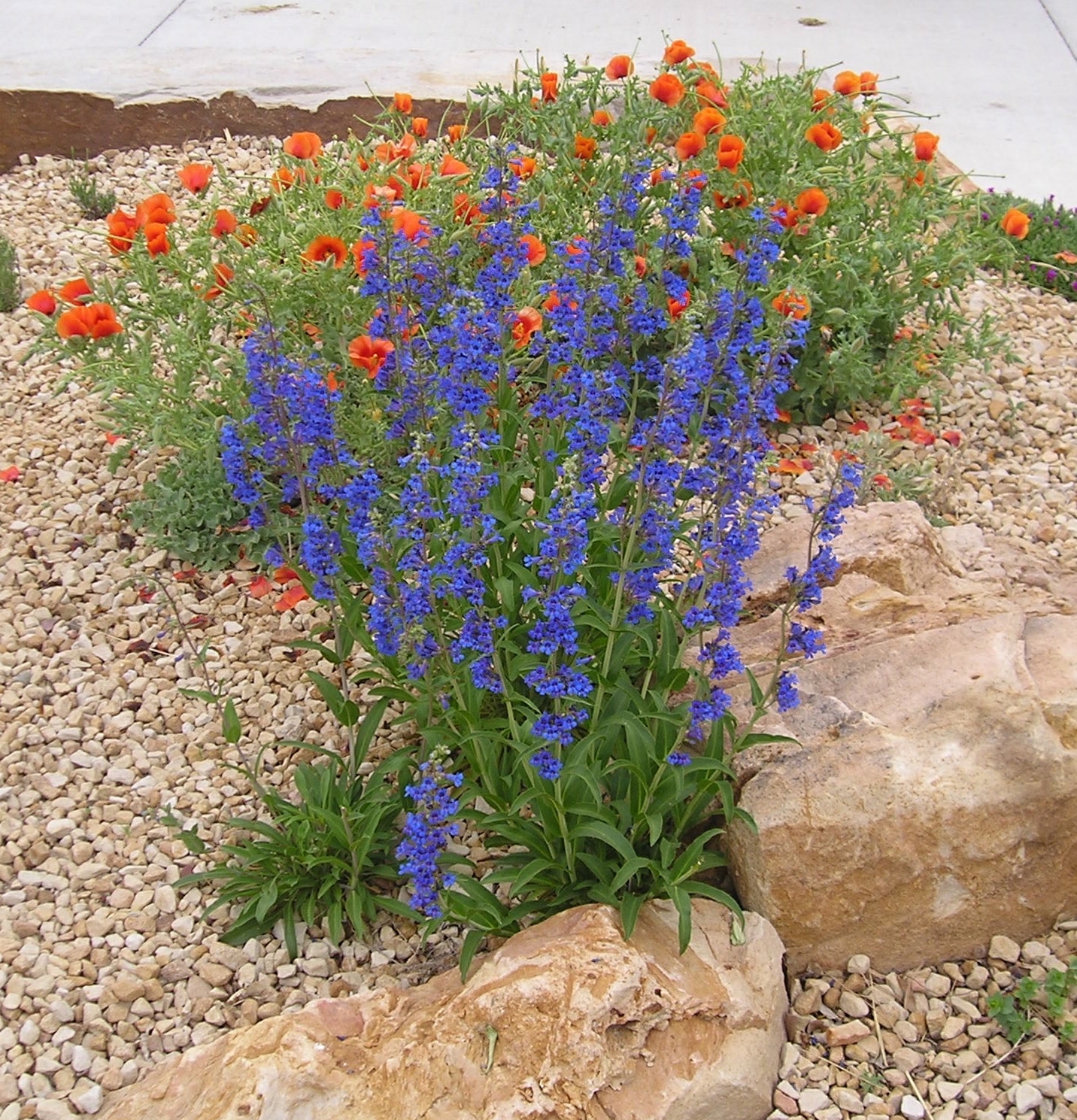
Blue Flax
(Linum lewisii, Zones 3–9)
Blooming around the same time as Grand Mesa penstemon, blue flax is a very different plant. Rather than assertive stalks, glossy leaves, and deeply saturated flowers, flax presents with graceful, arching stems, thin and airy foliage, and soft-blue, five-petaled flowers that shatter in the heat of the day. This elegant perennial presents a fresh crop of the crepe paper–thin petals each morning and follows with a respectable seed set that can help the relatively short-lived plants to maintain strong stands in gardens. This finely textured native makes a good filler for mesic to dry meadows and perennial beds, and adapts to a variety of soil textures. The cut foliage can be quite attractive in bouquets as well, though don’t expect the short-lived blooms to hold in a vase. Blue flax is hardy into Zone 3 and can be grown easily from direct-sown seed. It is widely available at nurseries across the region too.
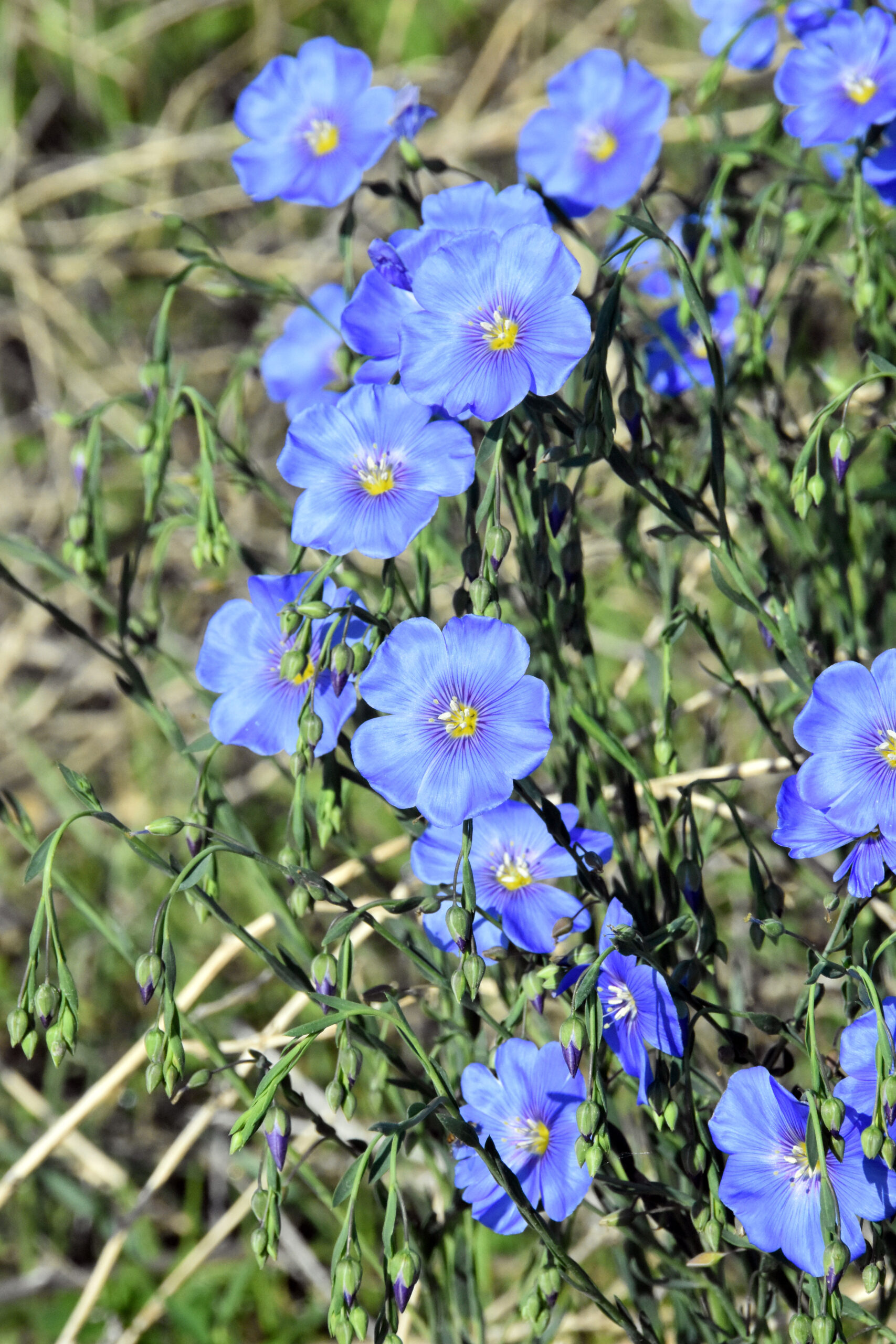
Pleated Gentian and Parry’s Gentian
(Gentiana affinis, Zones 3–9) and (Gentiana parryi, Zones 4–7)
Unlike previous plants in this piece that flower in the first half of the season, our native gentians flower during the second half of the growing season, with the most horticulturally inclined, pleated gentian, hitting its stride in late summer. The species occurs naturally across the northern Great Plains, Rockies, and Great Basin in seasonally wet locales. You may need to grow this plant from seed to cultivate it in your garden. Thankfully, a handful of reputable seed companies now offer the species or the surprisingly similar Parry’s gentian, and both species are native to a good swath of our region. An internet search for “seed of _____” will reveal your choices. Both are very cold hardy and appreciate moderate to moist garden settings with partial or full sun.
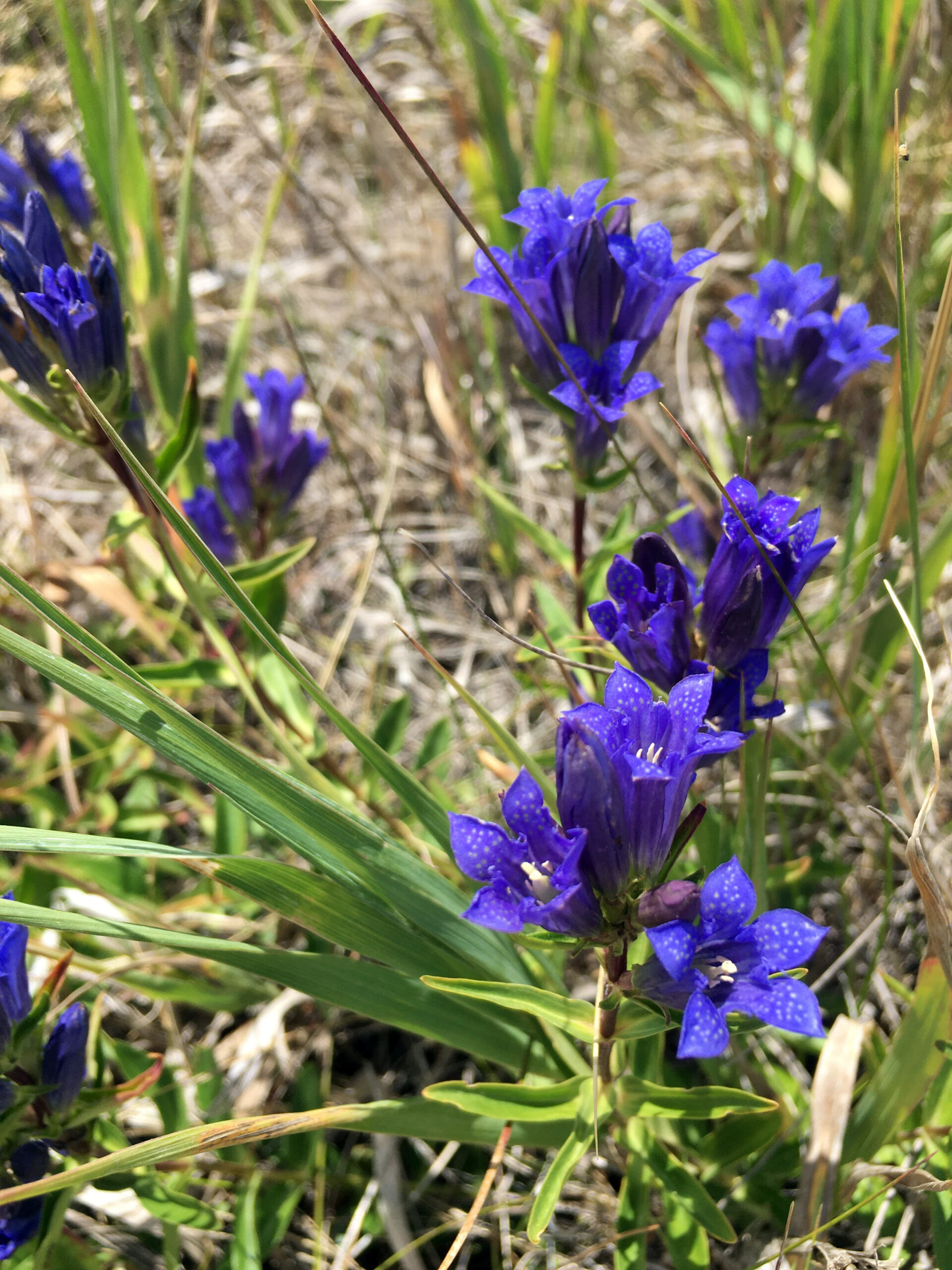
Although true blue may be a rarity in wild places of our region, it doesn’t need to be so elusive in your garden. Consider pairing blues with contrasting warm oranges or electric yellows and cooler greens for striking floral displays that make quick impact. Or feel free to let them shine on their own. Even just en masse, true blue makes quite a splash.
See more Mountain West regional reports here.
To discuss these plants or ask other gardening questions, chat with gardeners from your area on the Gardening Answers forum.
Bryan Fischer lives and gardens at the intersection of the Great Plains and the Rockies. He is a horticulturist and the curator of plant collections for a local botanic garden.
All photos unless otherwise noted: Bryan Fischer
Fine Gardening Recommended Products
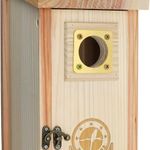
Bird Houses for Outside Clearance with Copper Guard, Cedar Bird House Outdoor, Bluebird Finch Swallow Wren Chickadee
Fine Gardening receives a commission for items purchased through links on this site, including Amazon Associates and other affiliate advertising programs.
1-1/2″ ENTRANCE HOLE SIZE: SISTERBIRD bluebird houses for outside have a properly-sized entrance hole, through this blue bird houses for outside you can attract desirable species to your bluebird house, such as Bluebird, Wren, Tree Swallow, Chickadees, etc. While this blue bird house excluding predators and unwanted occupants, for example, European starlings. HIGH-QUALITY MATERIALS: SISTERBIRD birdhouse kits for kids and adults use untreated, unpainted cedar. bluebird nesting box has a rough surface, and birdhouses for outdoors can give birds a foothold as they enter and exit the cedar bluebird house. Cedar of birdhouses for outdoors clearance also can keep out weather-related damage. SAFE HOME FOR FLEDGLINGS: SISTERBIRD Bluebird BirdHouse Box with copper predator guard around the entrance hole can help young birds against predators. These birdhouses for outdoors interior grooves, like a small ladder, help young birds leave the cedar bird houses for outside, especially swallows and bluebirds. A great birdhouses for outside clearance for creating a trail. EASY AND FUN TO ASSEMBLE: Just use a screwdriver, you can experience the thrill of working with your family to build blue bird houses, and feel the pride that comes from building a bird nesting box for little birds. You can also DIY, paint it, making blue bird box special and unique, build your own blue bird houses for outdoors. EASY TO CLEAN & REUSABLE: SISTERBIRD wooden bird houses front door opens for easy cleaning after fledglings have left. When the season is over, clean out the blue bird boxes for outside and save bluebird birdhouses for outdoors clearance for next spring.
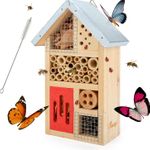
Niteangel Natural Wooden Insect Hotel, Garden Insect House for Ladybugs, lacewings, Butterfly, Bee, Bug
Fine Gardening receives a commission for items purchased through links on this site, including Amazon Associates and other affiliate advertising programs.
The insect nest box provide a safe environment where garden creatures can shelter, hibernate and lay their eggs, the insect house can also keep insects from entering your warm room. The insect hotel makes it easy to find and observe fascinating creatures. the butterfly, bees and ladybugs can use this product as habitat. Dry wood and Bamboo can be home to many insects such as ladybirds and lacewings which eat aphids and help keep your plants pest-free. the insect hotel improve the growth of plants in your yard by attracting beneficial insects. The iron design on the top can keep the insect house from rainwater. Let the insect house have a longer useful life and make the insects more comfortable. If you only have a balcony or yard, the hanging garden shelter is ideal as it provides a choice of suitable habitats in a small area.
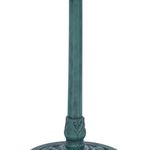
Alpine Corporation 28″ Tall Outdoor Birdbath with Scrollwork Decoration Yard Statue
Fine Gardening receives a commission for items purchased through links on this site, including Amazon Associates and other affiliate advertising programs.
STUNNING BIRDBATH: Quality birdbath is sure to attract feathered friends and create a charismatic ambiance for your garden, patio, deck, yard, or other outdoor space. SHALLOW SHAPE: Shallow and wide bowl assures that multiple small birds can drink and bathe safely at the same time
BEAUTIFUL DESIGN: Luxurious and antique styling adds a touch of elegance to your garden or yard. DURABLE CONSTRUCTION: Polypropylene material resists rust and damage from the elements while the sturdy base prevents the birdbath from tipping over. IDEAL SIZE: Birdbath measures 20″ L x 20″W x 28″H, the perfect size for your yard, and includes a one-year manufacturer’s warranty from date of purchase.

